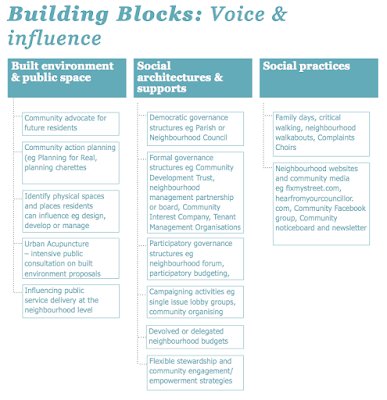Filmmaker
Alex Mallis gives insight in the protesters' everyday life. Only in a few weeks time OWS formed a remarkable community with highly developed infrastructures at Zuccotti park. Amongst the most obvious of the emerged infrastructures are food provision, personal hygiene, and sleeping camps. Moreover the protesters also initiated a highly developed media centre at the square, with electricity from gasoline powered generators. Furtheron they have organised their own health-care with sponsored medication, and as well - since protesting and sleeping on the concrete floor has implications on the protesters' body - a massage studio. Collective cigarette rolling and musical entertainment are also amongst the activities and services the occupation of Zuccotti Park provides. Watching the short documentary very much brings into mind how informal settlements in other cities of the world work. Strinkingly, the OWS protesters generated a thriving urban space in a remarkable short period of time. What sets the OWS space apart from other informal settlements is that the mainly young protesters can tap into recources that less medialised communities are not able to access. The internet and even the installation of a shipping address (The UPS Store, Re: Occupy Wall Street, 118A Fulton St. #205, New York, NY 10038) has supported the rapid infrastructural development at Zuccotti Park.
After it was announced that the police will be clearing
the privately owned public space of the protesters so that the parks owner can clean and do repairs, OWS has mounted an online effort to get the resources they need to clean up the park themselves before the police will take action on friday. The single proper reaction to this announcement. OWS is asking people to donate brooms, lots of brooms, mops, squeegees, buckets, waste bins, dust pans, trash bags, and they could use some power washers too either to bring them to the plaza or to ship them to their address (via amazon possibly).
In course of the announcement of the clearing of the plaza
the letter from the park owner Brookfield Properties to NYPD leaked yesterday. Unsurprisingly they no longer tolerate the occupation. Their reasons are mainly circulating around that the 'public space' has to be clean and neat to be able to serve the local population again - which in fact are the Wall St brokers (who also were sending complaints to the owner). Hence cleanliness and locality might overcome freedom of political expression with potentially massive impact. And NYC Mayor Bloomberg
approves. We are waiting with bated breath what will happen.
Finally, here is a
link to the transcript of Slavoj Zizek's recent speech at Zuccotti Park.
Postscript Oct 22: The clearance of the park could have been prevented.
Here is a link engaging as well with the community that evolved since the start of the occupation of Liberty Plaza: It tells us more about the barbers, cigarette rollers and other volunteer workers.




























































